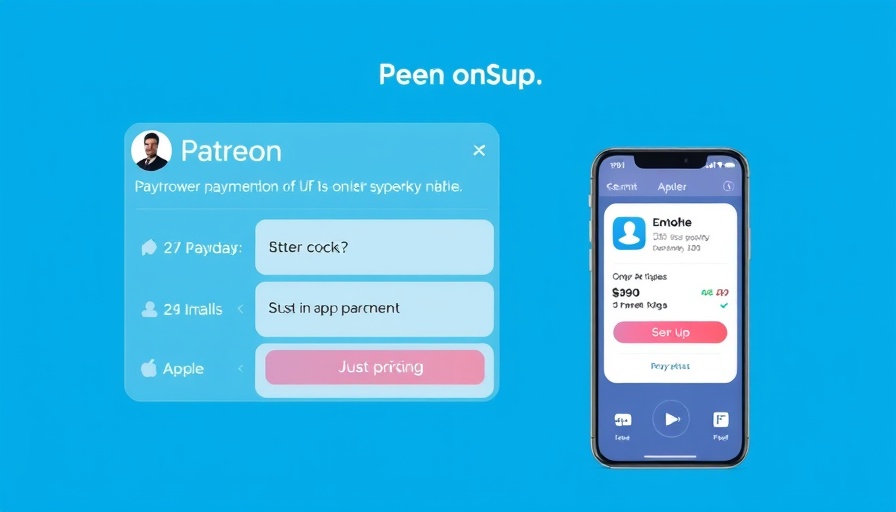
Apple's Shift: New Billing Practices Impact Creators
In a significant move for the creator economy, Apple recently mandated that Patreon adjust its app's billing procedure, directing patrons to use an external browser for purchases rather than an in-app browser. This shift comes after Patreon updated its app to enhance user payments capabilities, allowing fans to use various payment methods like Venmo, PayPal, and Apple Pay. The decision has stirred reactions among content creators keen on maximizing their earnings while navigating Apple's demanding commission structures.
The Background: Why This Matters
The impact of Apple’s decision is compounded by a backdrop of ongoing disputes over app store commissions and user payment choices. Following a landmark ruling in the Apple-Epic legal battle, companies like Patreon have been eager to explore new billing options that could lessen the hefty 30% cut Apple typically takes on in-app purchases. While it's fortunate for creators that they've been given more flexibility, this regulatory step backward to an external browser adds another layer of friction for users trying to make quick purchases within the app.
Understanding the User Experience: A Mixed Bag
For Patreon users, the update to the app's checkout process could create frustration. Previous iterations allowed for a seamless in-app experience, where transactions occurred within the app's ecosystem. Now, users must navigate to an external browser, potentially complicating the purchasing pipeline and possibly causing increased drop-off rates. It's a classic dilemma: the struggle between maintaining a user-friendly interface and adhering to Apple’s stringent guidelines.
How This Affects Creators
Despite the inconvenience posed by the change, it's essential that creators adapt to these new billing options. Approximately 95% of Patreon creators are already under subscription billing, a model that allows various features like discounts and gifting—which may very well entice fans to stick around longer. However, the remaining 5% who rely on older billing models like per-creation and first-of-the-month payments are now potentially given new and vital tools to better monetize their content.
Future Trends and Predictions in App Billing
The tug-of-war between tech giants over payment models may well redefine the landscape for app creators and consumers. As platforms like Patreon and others look for workarounds to bypass strict app store commissions, we can expect companies to innovate their billing solutions, likely in pursuit of more favorable conditions for creators. Moreover, if other platforms follow in Patreon's footsteps, we may witness a more collaborative approach from app developers to negotiate fees with Apple, possibly paving the way for a broader shift in how app transactions occur.
Final Thoughts: The Bigger Picture
While these changes present new challenges, they also offer opportunities for creators to diversify their payment structures and address a wider audience with greater flexibility in membership options. If anything, the persistent push and pull between platforms and tech companies reminds us of the necessity for ongoing discussions around digital economy fairness. For content creators gnawing at the edges of these limitations, adapting and finding ways to streamline the user experience will be crucial in the coming months.
 Add Row
Add Row  Add
Add 



Write A Comment